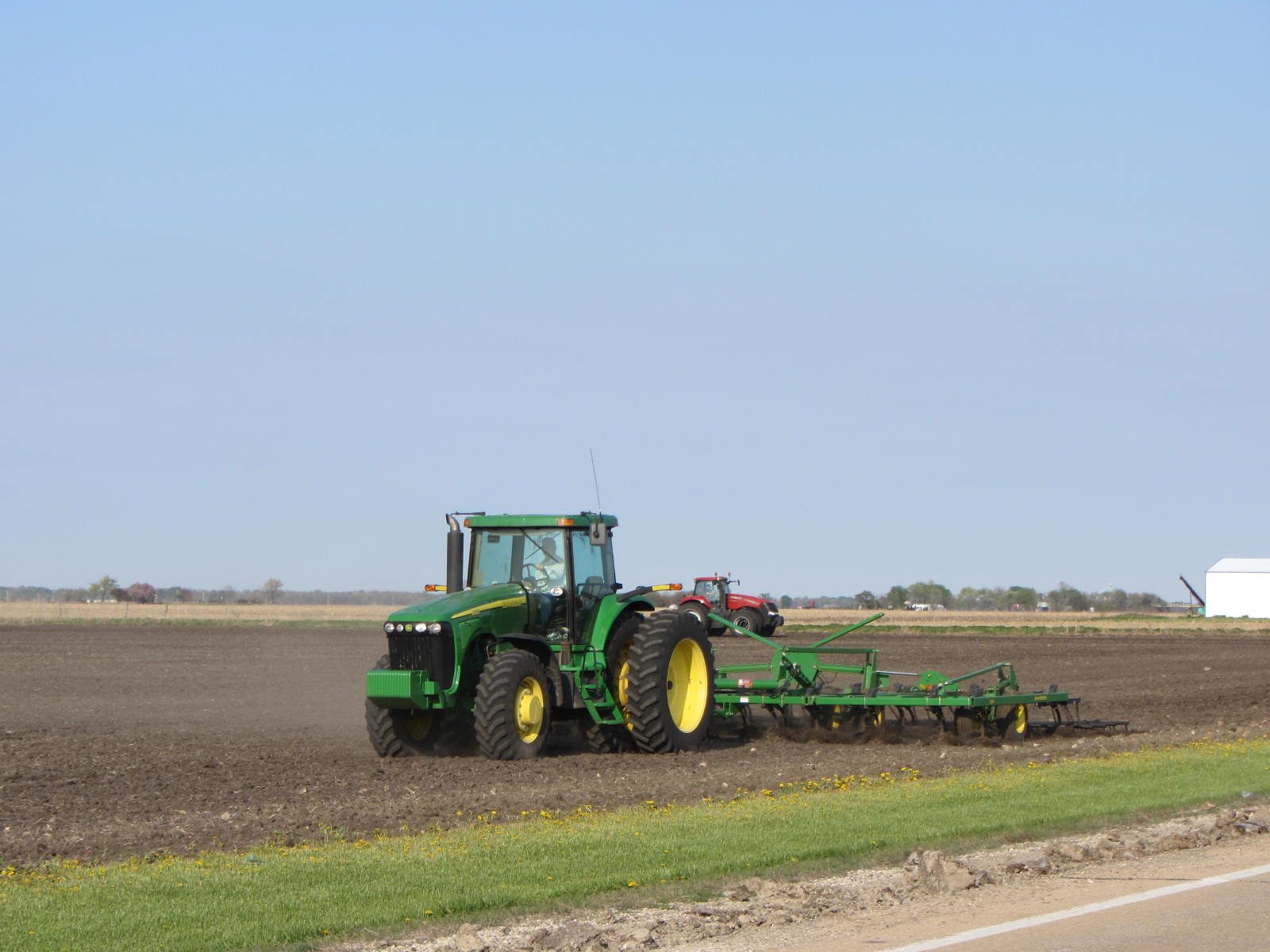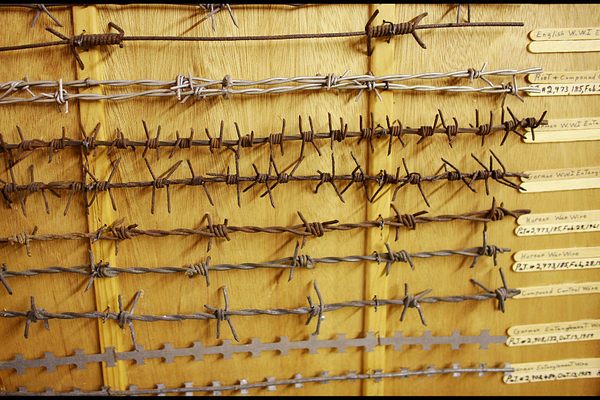This Iowa Town’s Dirt Might Be More Valuable than Gold
Conrad, Iowa is the black dirt capital of the world.

Conrad, Iowa, was first settled in 1853. (Photo: Courtesy Bob Coulter/City of Conrad)
Every positive has a negative, every yin has a yang. On the one hand there is El Dorado, the mythical Andean city that for centuries was rumored to sparkle with gold, its splendors manifold, its location unfathomable. On the other there is Conrad, a small town located on the gently rolling Iowa prairie whose wonders are specific and whereabouts well signposted.
El Dorado is known as the Lost City of Gold. Conrad, by contrast, is the Black Dirt Capital of the World.
When the first settlers, led by the lushly bearded J.W. Conrad himself, set up camp here in 1853, there were few trees, just unbroken grasslands stretching as far as the eye could see. It is perhaps no surprise that given the relentless monotony of the horizon, these pioneers should look downward for inspiration. What they found was mesmerizing—striking black soil.

A tractor in Grundy County, where Conrad is located. (Photo: David Wilson/CC BY 2.0)
Twelve thousand years of prairie grass had seeded, sprouted and withered on these poorly drained plains, laying down a thick layer of black organic matter that extended two feet deep. When combined with the thick covering of minerals deposited here by centuries of dust storms, the soil of Conrad had become a magical mixture of humus (a layer of organic matter, not chickpeas), sand, silt and clay. The settlers soon found that whether they planted corn, oats, wheat or hay, all grew with remarkable prolificacy.
It’s difficult to pinpoint the most fertile place on earth. Some have suggested that the Pampas of Argentina have soil of especial richness. Others posit certain areas of the Ukraine, where the fecundity of the soil has led to a $900 million black market in “chernozem” (“black dirt”). However the National Laboratory for Agriculture and the Environment, located a dispassionate 53 miles away from Conrad, has declared Conrad’s soil among the richest farmland in the world. What’s more Grundy County, in which Conrad is located, heads the league in Iowa State University’s famed Corn Suitability Ratings. Not only does it have the highest average—84.7—of any county in Iowa, it absolutely trounces the next most fruitful area, Mitchell County, whose pitiful 77.7 rating makes you wonder if the poor folk who live there can muster two cobs to rub together.

Conrad, Iowa. (Photo: Courtesy Bob Coulter/City of Conrad)
To celebrate its luscious loam Conrad holds a festival each year with the surprisingly indefinite title, Black Dirt Days. It is quite the hot ticket. The local newspaper boasts of hundreds of people lining up to watch the Black Dirt Days parade “more than 30 minutes” before it starts. The festival itself is replete with quilt shows, pony rides, tractor pulls and snow cones. Yet while these entertainments may seem no different to those of any small town fair, the cause of its celebration really does set Conrad apart.
The fact is that worshiping soil is something of an anomaly in human history. Societies have throughout history connected the earth’s fecundity with gods and goddesses, but these have largely been broad nature deities rather than divinities linked specifically to soil. One of the only societies to develop specific soil worship prior to the Iowans of Conrad was found in ancient China. Soil is at the heart of the Sheji tan altar (“Altar of Soil and Grain”) built in Beijing in 1421, in which a raised platform holds five kinds of differently colored earth—yellow, green, red, white and black. The differing colors represent the five elements but also the basic soil types to be found throughout the country. Indeed this altar was the continuation of a practice that started in the ancient Zhou dynasty. When underlords in the Zhou were enfeoffed, the king would give them clods of earth from his own Sheji tan altar that would correspond to the soil of the land they were set to rule.
Nevertheless dirt has never been held in such high regard as the plants that grow within it. We hold harvest festivals to celebrate the earth’s bounty but we rarely celebrate that bounty’s birthplace. In so ignoring it we do it a disservice for dirt has played an essential role in the human diet, not just in terms of what it can grow, but in and of itself.

Grundy County tops the Corn Suitability Ratings. (Photo: regan76/CC BY 2.0)
Geophagy—the practice of eating earth—has been taking place for millennia. It still exists in sub-Saharan Africa where pregnant women commonly eat tablets made from clayey soil. The reasons for doing so are both nutritional (the soil is high in magnesium, potassium, copper, zinc and iron) and also the fact that eating earth relieves morning sickness and protects the stomach against toxins. In North Carolina and Georgia in the United States, “Mississppi Mud”—kaolin clays—is still popular as a kind of proto-Pepto-Bismol.
In fact eating dirt was probably the very first example of humans taking medicine. Even now this ancient trend is slipping back into mainstream cuisine. In Japan—which combines a smattering of soil deities borrowed from China with an inordinate number of Michelin-starred restaurants – tsuchi ryori (“earth cuisine”) has become increasingly popular. The chef, Yoshihiro Narisawa, has been serving his Soup of the Soil, made up of burdock root pan-fried in earth, for over a decade.

Iowan soil—Conrad’s has been deemed among the richest in the world. (Photo: Natural Resources Conservation Service/CC BY 2.0)
During Conrad’s Black Dirt Days there are neither soil deities to be venerated nor soil delicacies to be eaten. But in many ways Conrad has been ahead of the curve in its single-minded appreciation of its dirt. In recent years there has been an increasing clamor to reassess soil as a strategic resource. The loss of soil is increasingly being used to explain the demise of many ancient societies, from the Minoans and Mesopotamians to the Incas and the Aztec. Whether through the axe (deforestation) or the plow (agriculture) when soil is eroded faster than it can be replenished the collapse of a civilization is sure to follow. In Conrad itself that famed black dirt has already decreased from the two feet of topsoil the original settlers found to an average of between six to eight inches today. As the amount of farmable land lessens so its value increases. Soon Conrad and El Dorado may not seem quite so different.









Follow us on Twitter to get the latest on the world's hidden wonders.
Like us on Facebook to get the latest on the world's hidden wonders.
Follow us on Twitter Like us on Facebook